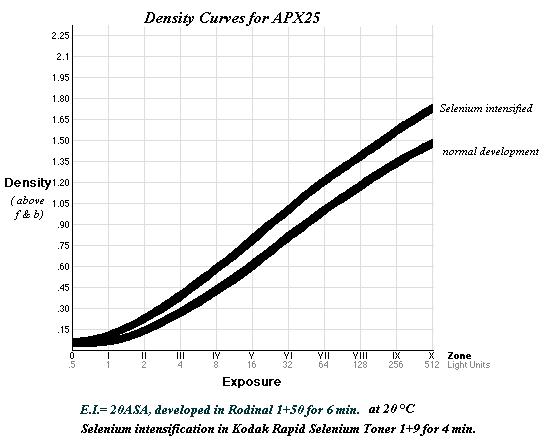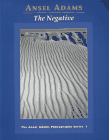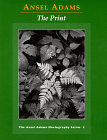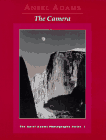This page is not intended as a tutorial on the zone system. If you are not familiar with the basic concepts of the zone system,
you are advised to read Ansel Adam's classic
The Negative (still the best book available) or visit the excellent site of the Cicada Photography Resource.
This page merely sums up my own (limited) experience with the zone system as I understand it.
| 0 | I | II | III | IV | V | VI | VII | VIII | IX | X |
Essentially, the zone system is a method of (pre)visualizing the finished print and planning film exposure and development accordingly. Once the time-consuming calibration procedures
are completed, the photographer will be able to apply the method quickly and almost intuitively to guide his vision in a confident and precise manner.
Calibration procedures for normal, so called N-development
If we make a series of exposures of a uniformly lit lightly textured surface from 5 stops less to 5 stops more than the reading of a meter set at the 'correct' exposure index,
develop the film 'normally' and print the resulting negatives on #2 paper with 'optimum' exposure time, we get 11 different prints ranging
from the deepest possible black to the pure white of the paper base. The shortest possible exposure that will print through the filmbase plus fog giving the deepest possible black is considered as optimum. This optimum clearly depends on the enlarger settings,
film, paper(grade) and even the paper developer used.
The grey-values of these 11 test prints will thus fall within 11
different so called zones, numbered from 0 to X. The bar at the top of the page is intended to give an impression of what the zones look like (adjust the contrast and brightness settings of your monitor until the zones I and IX differ slightly from pure black and pure white respectively). The central zone, V, ought to look like the well-known Kodak grey-card.
Zone III has the darkest tone still displaying full shadow details, whereas zone VII has the lightest possible but still fully detailed grey.
By systematically adjusting exposure index and developing times until a satisfying series of testprints is attained, normal development and effective filmspeed are established.
Approximate film densities (minus film base and fog) of the most critical zones:
Zone I: 0.1 (determining the effective film speed);
zone VIII: 1.2 for condenser enlargers and 1.3 for diffusion enlargers.
Furthermore, by using different combinations of developer dilutions and developing times, the shape of the density curve can be fine-tuned to personal preferences and film characteristics.
Film densities of large and medium sized negatives can be measured by covering the objective lens of a spotmeter by the negative and pointing the meter at an (overcast) sky.
A difference of one stop corresponds to a density difference of log2=0.3.
Previsualization
With the different zones in mind you can place the luminance of an important subject area in a particular zone and thereby determine the exposure setting of the camera.
Luminances of other subject areas now fall on different zones. By scanning the different subject areas with a spotmeter you are able to interpret the different luminances as
grey-values of the finished print. Most photographers start by placing important shadow areas in zone II or III and then look where important light areas will fall.
If a subject's contrast is too low or too high for a normal scale, expansion or contraction by extended or reduced development respectively is called for.
Expansion and contraction
It is important to realize that by expansion or contraction the low values are little affected (resulting in a small change in effective film speed), while the light values are
affected in a pronounced way. A shift of one zone in print value around zone VIII by extended development or reduced development is called N+1-development or N-1-development respectively.
Most films even allow N+2 and N-2 development, resulting in a two zone shift in the high values.
Becoming fluent with the zone system mainly consists of acquiring the ability to visualize subject values within these different modes or tonalities.
Reasons for using the zone system
Firstly, as a method of previsualizing the most expressive image, firmly based on the principles of sensitometry, there's really no way round the zone system.
On closer inspection, accomplished photographers who profess they can do without it, comply unwittingly with the principles of the zone system.
Secondly, by exposing and developing according to an exact previsualization the negative itself becomes the prime bearer of the intended photographic expression, resulting in a print of superior quality on 'normal' paper grades.
The use of rollflm
I use two film magazines with my Hasselblad: one loaded with APX25 (my favourite film) for 'normal' subjects requiring Normal or N+1-development. Nearly all of the images on this site were visualized either in N- or N+1-mode.
After normal development, I cut loose the N+1-negatives for selenium-intensification, reaching an effective N+1-density.
The second magazine is reserved for special film, like Konica 750 (infrared), Agfaortho (landscapes) or FP4 (portraits), or compensating development of APX25.
But even then unexpected lighting conditions may result in difficult-to-print negatives. In most cases however I get the previsualized print on normal (#2 or #3) paper,
using two-bath development for a fine-tuning of the contrast, without having to resort to extreme paper grades.
Normal development of APX25: expose at 20 ASA and develop in Rodinal 1+50 for 6 min. at 20 °C, 15 sec. agitation per min.
This will result in a density of 0.6 for zone V and 1.2 for zone VIII, which is excellent for an enlarger with (double) condensor.

The thickness of the curves not only reflects the crudeness of my measurements, but should also indicate the degree of accuracy needed for normal photographic practice.
Feel free to mail your questions or comments to Bas Hoeben.
|
Cicada Photography Resource |
Essential Reading: The Ansel Adams Photogaphy Series |


